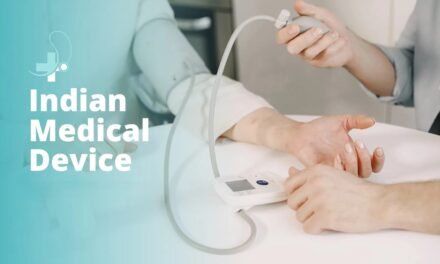
Navigating the Complexities of India’s Medical Device Distribution Network

India’s medical device distribution network is a critical component of the healthcare ecosystem, ensuring that essential products reach hospitals, clinics, and pharmacies across the country. However, the distribution landscape is complex and fragmented, with challenges stemming from regulatory hurdles, supply chain inefficiencies, and geographic disparities. Successfully navigating these complexities requires a thorough understanding of the system, strategic planning, and the adoption of innovative solutions.
1. Structure of India’s Medical Device Distribution Network:
A. Multilevel Distribution System:
- Importers and Manufacturers: Centralized hubs that supply products to regional distributors.
- Regional Distributors: Act as intermediaries, serving local distributors, sub-distributors, and retailers.
- Sub-Distributors and Retailers: Ensure last-mile delivery to healthcare providers, including hospitals, clinics, and pharmacies.
B. Stakeholders:
- Domestic and international manufacturers.
- Logistics providers for warehousing and transportation.
- Regulatory authorities for compliance monitoring.
- Healthcare providers as end users.
C. Key Distribution Channels:
- Direct Distribution: Large hospitals and healthcare groups source devices directly from manufacturers or importers.
- Third-Party Distribution: Smaller clinics and independent providers rely on third-party distributors for their supplies.
- E-commerce Platforms: Emerging online marketplaces are simplifying procurement for smaller healthcare providers.
2. Challenges in India’s Medical Device Distribution Network:
A. Fragmentation:
- The network is fragmented, with numerous small-scale distributors and sub-distributors operating independently.
- Lack of standardization across regions creates inefficiencies in inventory management and logistics.
B. Regulatory Compliance:
- Navigating regulatory requirements such as import licensing, GST compliance, and storage standards adds complexity.
- Inconsistent enforcement of Medical Device Rules (2017) across states leads to operational delays.
C. Geographic Disparities:
- Urban areas have robust distribution systems, but rural and remote regions suffer from inadequate access due to logistical challenges and poor infrastructure.
D. Supply Chain Inefficiencies:
- Ineffective inventory management leads to overstocking in some regions and shortages in others.
- High transportation costs and delays, especially for temperature-sensitive devices, impact timely delivery.
E. Limited Technological Adoption:
- Many distributors rely on traditional methods for inventory tracking, order processing, and delivery scheduling, leading to inefficiencies.
F. High Cost of Last-Mile Delivery:
- Delivering to remote or underserved areas significantly increases costs, particularly for low-margin products.
G. Dependency on Imports:
- Heavy reliance on imported devices complicates distribution due to customs clearance delays, additional costs, and supply chain disruptions.
3. Strategies to Address Distribution Challenges:
A. Streamlining Regulatory Processes:
- Unified Licensing System: Implement a centralized online portal for licenses and approvals to simplify regulatory compliance.
- Training Programs: Educate distributors and manufacturers about compliance with Medical Device Rules (2017) and other relevant regulations.
B. Strengthening Infrastructure:
- Regional Warehousing: Establish strategically located warehouses to improve regional access and reduce transportation costs.
- Cold Chain Logistics: Develop temperature-controlled storage and transport solutions for devices like vaccines and diagnostic equipment.
C. Leveraging Technology:
- Inventory Management Systems (IMS): Adopt digital tools for real-time inventory tracking and demand forecasting.
- Route Optimization Software: Use AI-driven tools to optimize delivery routes, reducing costs and delays.
- Blockchain: Implement blockchain for supply chain transparency and to combat counterfeit products.
D. Expanding Distribution Channels:
- E-commerce Platforms: Promote online marketplaces for medical device procurement to improve accessibility for smaller healthcare providers.
- Public-Private Partnerships: Collaborate with government agencies to develop distribution networks in underserved regions.
E. Enhancing Collaboration Among Stakeholders:
- Distributor-Manufacturer Partnerships: Build long-term relationships to ensure consistent supply and better demand management.
- Joint Ventures: Encourage collaboration between domestic and international companies to leverage combined expertise and networks.
F. Focusing on Last-Mile Delivery:
- Rural Hubs: Create regional hubs in rural areas to improve last-mile connectivity.
- Local Partnerships: Partner with local logistics providers to navigate terrain and infrastructural challenges effectively.
G. Training and Capacity Building:
- Workforce Development: Train distributors, retailers, and healthcare providers on device handling, regulatory compliance, and customer service.
- Digital Literacy: Provide training on using technological tools for inventory and order management.
4. Opportunities for Growth:
A. Emerging Markets:
- Growing healthcare needs in Tier 2 and Tier 3 cities offer significant expansion opportunities for medical device distribution networks.
B. Technological Advancements:
- IoT-enabled devices and telemedicine platforms create new distribution channels and reduce dependency on traditional models.
C. Government Support:
- Initiatives like Ayushman Bharat and the establishment of medical device parks aim to enhance access to affordable healthcare products.
D. Export Potential:
- Strengthening distribution infrastructure positions India as a hub for exporting affordable medical devices to neighboring countries and emerging markets.
5. Case Studies and Best Practices:
A. E-commerce Adoption:
- Platforms like Medikabazaar and HealthKart have revolutionized the procurement process for small-scale providers, enabling easy access to medical devices.
B. Regional Warehousing Success:
- Companies implementing regional distribution hubs have seen reductions in delivery timelines and costs, improving service levels.
C. Public-Private Partnerships:
- Collaborations with government initiatives to improve rural healthcare delivery have expanded access to critical devices in underserved regions.
6. The Way Forward:
A. Embrace Digital Transformation:
- Digitizing inventory, order management, and logistics processes will enhance efficiency and transparency across the distribution network.
B. Foster Collaboration:
- Strengthen partnerships between manufacturers, distributors, and logistics providers to address supply chain challenges collaboratively.
C. Invest in Infrastructure:
- Developing regional warehouses, cold chain logistics, and rural hubs will ensure equitable access to medical devices across the country.
D. Policy Support:
- Simplifying regulations, providing financial incentives, and supporting small distributors can help overcome systemic inefficiencies.




























